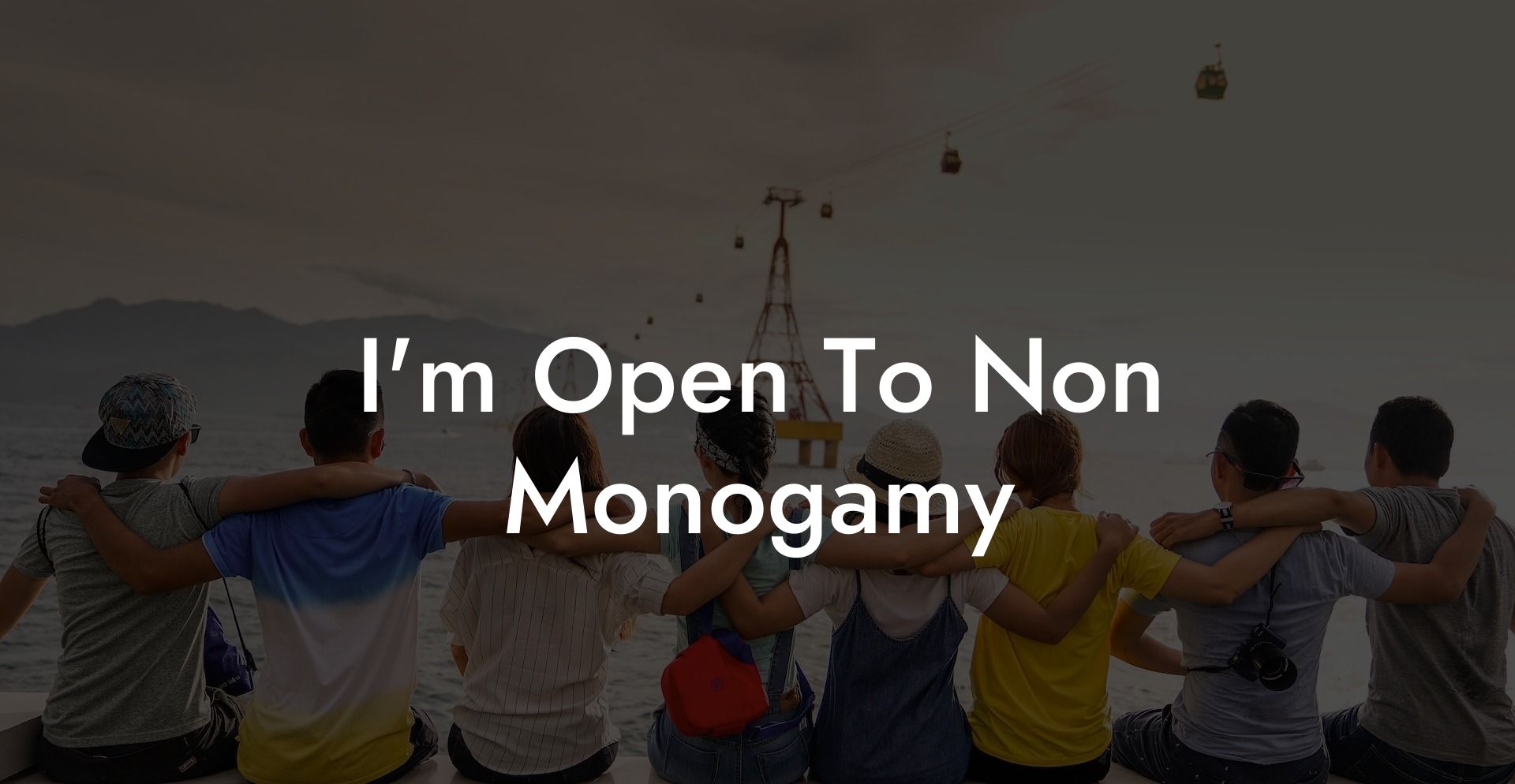Monogamy – the idea of committing to a single person for the rest of one's life – has long been the established relationship norm. But what if there's another pathway that might suit you better? Non-monogamy is an alternative that challenges societal notions of what a loving, committed relationship can be. If you've been thinking, "I'm open to non-monogamy" but aren't quite sure what that means or how it might work for you, you're in the right place. In this guide, we'll explore the meaning of non-monogamy, its various forms, and provide suggestions for navigating this less-traveled relationship route.
I'm Open To Non Monogamy Table of Contents
Non-monogamy, at its core, refers to relationships that do not adhere to the idea of having only one romantic or sexual partner at a time. These relationships may involve multiple partners or allowing one's partner to have additional relationships outside of the primary bond. The umbrella term of non-monogamy includes various relationship styles, such as open relationships, polyamory, swinging, and relationship anarchy. Each of these provides a unique way of experiencing relationships according to one's preferences, feelings, and beliefs.
1. Open Relationships
In an open relationship, partners agree that exploring romantic or sexual connections with others is permissible. These relationships can be emotionally monogamous, with one primary relationship, but allow for physical connections with other people.
2. Polyamory
Polyamory involves having multiple romantic relationships that are maintained openly and ethically. All parties involved are aware of the connections and have consented to the relationships. Polyamory may involve various relationship structures, from triads to complex networks of relationships.
3. Swinging
Swinging is a form of non-monogamy that specifically focuses on partner swapping within an established couple. Generally, it is primarily about casual sexual connections rather than a deeper emotional bond.
4. Relationship Anarchy
Practitioners of relationship anarchy reject traditional relationship hierarchies and do not distinguish between platonic, romantic, and sexual relationships. This form of non-monogamy focuses on organic connections and prioritizing individual autonomy.
I'm Open To Non Monogamy Example
Imagine a couple, Jane and John, who have been together for a few years. While they are deeply in love, they find themselves curious about exploring connections with other people. After discussing their feelings, they agree to open their relationship. They establish boundaries and guidelines that both partners agree upon to maintain trust and communication. Jane begins dating another person, while John engages in occasional casual encounters. Their commitment to each other remains strong, and their newfound experiences offer them a fresh perspective on their relationship, leading to personal growth and a deeper understanding of one another.
Non-monogamy may not be for everyone, but for those who find themselves drawn to it, the possibilities are endless. By understanding the nuances of these alternative relationship styles and communicating openly with your partner(s), you can embark on a journey outside the limits of monogamy. Remember to always prioritize consent, communication, and emotional well-being, and embrace the freedom to explore your desires.
If you found this guide helpful, we encourage you to share it with others who may be curious as well or explore other resources on The Monogamy Experiment. Non-monogamy is a world full of potential for love, growth, and connection – and who knows, it might just be the relationship style you've been looking for all along.













